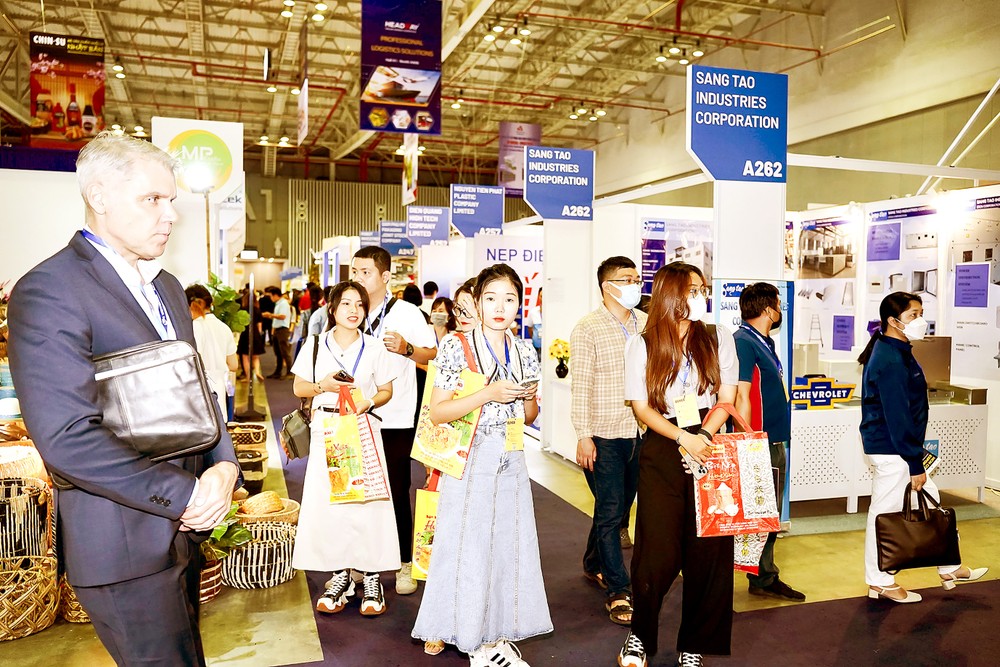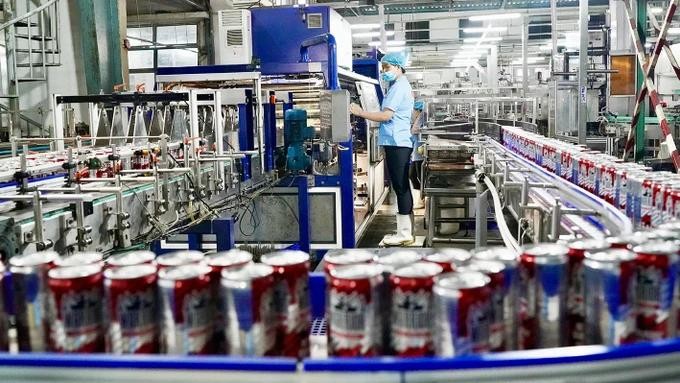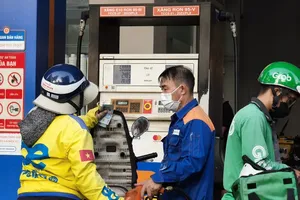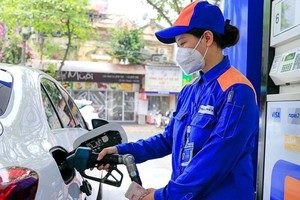
Chairwoman Ly Kim Chi of the Ho Chi Minh City Food and Foodstuff Association remarked that the economy of Ho Chi Minh City has faced challenges since the start of the year due to global economic issues, including climate change, rising prices, and more stringent regulations from key export markets. However, the robust domestic consumption and the resurgence of tourism have contributed to sustaining a positive growth momentum.
Ho Chi Minh City's industrial production activities have shown signs of recovery, with the Industrial Production Index (IIP) increasing by 6.9 percent compared to the same period in 2023. The food industry played a significant role in this growth, with a production index increase of over 3.3 percent year over year. Notably, certain commodity groups experienced remarkable growth, such as oil and animal and vegetable fats (15 percent) and aquatic products and seafood processing (26.5 percent), as highlighted by Chairwoman Ly Kim Chi.
Export prices of various agricultural products hit record highs
According to information from the Department of Industry and Trade of Ho Chi Minh City, the total export turnover of enterprises in Ho Chi Minh City through the country's border gates was estimated to reach US$33.82 billion in the first nine months of 2024, reflecting a 10.2 percent increase compared to the same period last year.
The average prices of several exported items have surged significantly, with rice priced at US$625 per ton, marking a 14.8 percent increase; coffee at US$3,805 per ton, up by 54.5 percent; and pepper at US$4,810 per ton, an increase of 47 percent. The United States, China, and Japan continued to be the three largest export markets for Vietnam.
Exports continue to significantly contribute to Ho Chi Minh City's overall economic growth. General Director Nguyen Dang Hien of Tan Quang Minh Production and Trading Company Limited has noted that not only his company but also numerous member enterprises of the Ho Chi Minh City Food and Foodstuff Association have a robust pipeline of export orders extending through the end of the year and into the first quarter of 2025.
Key product categories driving this export surge include vermicelli, rice, bottled fruit juice, seafood, and processed foods. Not only has the volume of export orders increased, but businesses are also poised for a bumper harvest in 2024 due to a rise in the value of exported goods.
Furthermore, there has been a notable increase in domestic consumption. General Director Nguyen Anh Duc of the Ho Chi Minh City Union of Trading Cooperatives (Saigon Co.op) announced the recent opening of two supermarkets including Co.opmart located on Pham The Hien Street in District 8 and Co.opXtra in Long Binh Ward of Thu Duc City.
Additionally, another Co.opXtra is set to open in District 8 in early November. The rapid development and establishment of numerous supermarkets clearly indicate a gradual recovery in market purchasing power. Moreover, the fourth quarter is recognized as a peak shopping period thanks to various festivals and the Lunar New Year.
In response, Saigon Co.op has increased its inventory and proactively engaged with suppliers to ensure stable product prices, thereby mitigating any potential price hikes that could impact consumer purchasing power.
In a talk with SGGP reporters, Chairman Nguyen Ngoc Hoa of the Ho Chi Minh City Business Association said that in addition to the above-mentioned industrial production, consumption and export indexes, the city's other economic indicators also recorded positive growth.
Specifically, the southern largest city has demonstrated robust economic performance, with realized investment capital up by 6.7 percent, total state budget revenue increasing by 14.3 percent, freight revenue rising by 12 percent, and the consumer price index growing by 3.17 percent.

As the global economy continues to gain momentum in the final months of the year, Ho Chi Minh City's export activities are projected to maintain positive traction in key markets. This favorable outlook is expected to support the recovery of overall demand for goods and services within the city.
To boost the local economy, the city should focus on two key strategies in the medium term. First, it should increase trade promotion efforts that leverage regional business connections. Second, the city should implement a variety of promotional programs designed to stimulate consumer spending and purchasing power.
The city's budget relies heavily on tourism revenue, so it's crucial to make most of major holidays such as Christmas and New Year's Day to drive tourism demand and spur growth in the service sector.
Economic experts assert that the city has implemented prompt measures to revitalize growth momentum by eliminating policy obstacles. In particular, Ho Chi Minh City has reduced the time required for processing investment registration procedures by 30 percent relative to the legally mandated duration.
The city now approves new investment projects within 10 days instead of the previous 15 days, modifies existing projects in seven days rather than 10 days, and notifies stakeholders regarding capital contributions or share purchases in 10 days instead of 15 days. Additionally, the time frame for online submissions has been shortened to eight days.
According to Deputy Director Pham Binh An of the Ho Chi Minh City Institute for Development Studies, the southern metropolis should make the most of the Resolution No. 98/2023/QH15 to establish a unique and outstanding mechanism and policy, creating a legal basis to promote potential and advantages, creating a breakthrough to solve the city's socio-economic bottlenecks, especially in the investment field.
He noted that immediate investment in transport infrastructure is crucial to alleviate traffic congestion and facilitate the efficient movement of goods.
Simultaneously, it is essential to establish a clean industrial land fund, particularly aimed at giant investors who require extensive plots at competitive rental rates that are favorable compared to surrounding regions.
In particular, it is necessary to consider prioritizing the area of new industrial parks or piloting the conversion and restructuring of operating export processing zones and industrial parks such as Tan Thuan, Hiep Phuoc, Tan Binh, Cat Lai, Binh Chieu.
He stressed that only by creating a suitable business destination, maximizing investment attraction policies, and increasing market demand, the city can drive economic growth and development.
Director Tran Phu Lu of the Ho Chi Minh City Trade and Investment Promotion Center has announced that the city is offering four primary incentive packages to attract foreign investors.
The first incentive is a corporate income tax reduction of 10 percent for a period of up to 15 or 30 years. The second incentive provides exemption from import taxes on goods used to create fixed assets, as well as raw materials, supplies, and components for production. The third incentive offers exemption or reduction of land use fees, land rent, and land use tax.
The city will provide a rent exemption during the initial construction phase for a duration of three years. Following this period, the exemption will extend for an additional 15 to 19 years, contingent upon the specific type of project undertaken. Furthermore, there exists an incentive for accelerated depreciation, which enhances the deductible expenses when determining taxable income. Specifically, the depreciation period for fixed assets ranges from five to twenty years, utilizing the straight-line depreciation method.
Additionally, the city has established a unique mechanism for investors who engage in projects aimed at developing innovation centers, research and development (R&D) facilities, and initiatives that facilitate the transfer of advanced technology in sectors such as information technology, biotechnology, automation, new materials, and clean energy, provided the total investment reaches US$120 million or more.
Notably, projects within the semiconductor integrated circuit industry, including the design and manufacturing of components, integrated electronic microcircuits (IC), flexible electronics (PE), chips, new technology batteries, and the clean energy sector, require an investment of US$1.23 billion or greater.
























